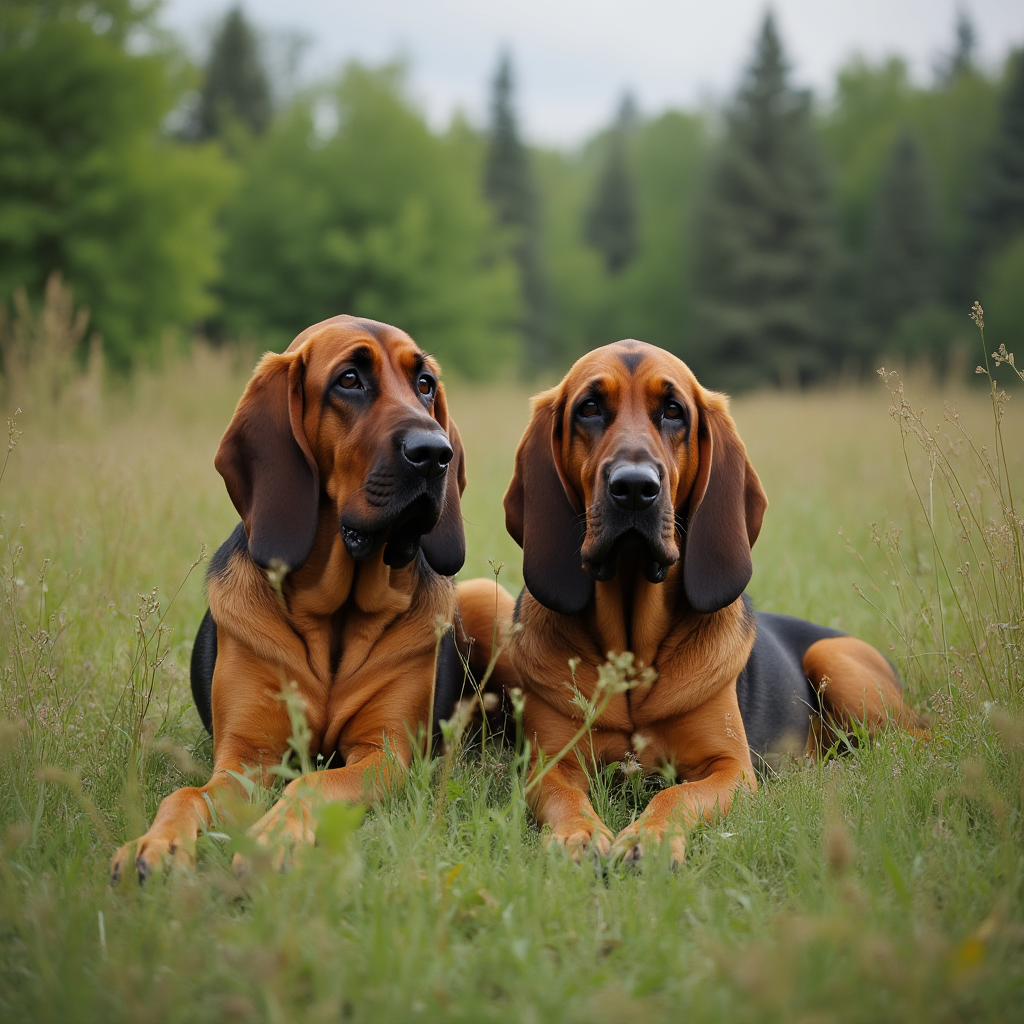
Hound dogs have a certain charm that’s hard to ignore. Their roots dig deep into history, offering a tapestry of tales that showcase their evolution. Originally bred for hunting, these dogs have traits that date back to ancient times. When they were hot on a trail, nothing else seemed to matter. Early hunters knew their worth, relying on them for tracking prey over vast distances.
Throughout the ages, hounds didn’t just hunt; they provided companionship and even assisted in law enforcement. Feudal lords prized these dogs for their skill and loyalty, while common folks appreciated their keen noses and sharp eyes. Each society added its touch to the hound’s abilities, giving rise to the diverse breeds we know today.
Some hound dogs have even made their mark in historical texts and popular tales. For instance, the storied Bloodhound, with its unmatched tracking prowess, leaves us more than just droopy-faced cuteness; it’s synonymous with relentless pursuit and accuracy. It’s intriguing to learn how these dogs adapted to their environments and earned their reputations over centuries.
Famous hound dogs have walked alongside celebrated figures, etched into narratives that highlight their abilities. Be it medieval hunts or royal courts, these dogs were more than mere pets. They were partners in adventure and sometimes, the unsung heroes of history. Their unique blend of dedication, intelligence, and spirit makes exploring their history a fascinating journey.
Scent Hounds: Masters of the Olfactory Realm
Scent hounds have a talent for sniffing that borders on magical. Take the Bloodhound, for instance—its nose is like a finely tuned instrument, capable of picking up a scent trail several days old and following it for miles. This skill doesn’t just make for great tales of old; it’s quite a spectacle in action today, especially in search-and-rescue operations.
Beagles, with their cheerful disposition and curious nature, highlight just how ingrained scent tracking is for these breeds. Whether they’re chasing bunnies in a field or working at airports sniffing out contraband, their noses never stop working. Scent hounds are like the detectives of the dog world, knowledgeable and persistent in their pursuit of the unseen.
Modern tasks for scent hounds go beyond just tracking down lost hikers or criminals. They play critical roles in wildlife conservation efforts, monitoring endangered species by their traces. Their noses can detect specific plant diseases too, lending a paw in agriculture. And, in a more personal setting, they provide an unmatched sense of companionship, driven by their friendly and eager-to-please nature.
What makes them great family pets? That intense dedication and loyalty are legendary. But it’s key to remember that they need a lot of physical and mental exercise. Picture your Beagle or Coonhound happily exploring new scents in the park—they thrive in environments that stimulate their senses and get their tails wagging. Keep this in mind and they’ll bring endless joy into your life.
Sight Hounds: Swift Athletes with Keen Vision
Sight hounds are like the sports cars of the dog world—built for speed and sleekness, they were made to chase down prey with their eyes. Greyhounds stand out with their long legs and lean bodies, capable of breathtaking speeds. Watching them run is poetry in motion, their grace and agility unmatched.
Whippets and Salukis, cousins in this athletic family, also bring their A-game to sprints. These breeds have anatomical designs that allow for powerful strides and precise navigation through varied terrains. While their nose doesn’t drive their pursuits like scent hounds, their visual acuity gives them an edge, spotting movement from distances most canines wouldn’t catch.
In today’s world, sight hounds don’t just rule the racetrack. They thrive in homes where they get plenty of physical activity and engagement. They enjoy lure coursing, an activity that mimics the original challenges they faced while chasing prey. This fun and energetic sport keeps them fit both mentally and physically—something an active owner should definitely consider.
These dogs make it clear that they love their downtime as much as they do running around. Their laid-back temperament can be a delightful contrast to their athletic prowess. With regular exercise and affection, they fit perfectly into a family setting—just remember, when a sight hound stretches out on your couch, it’s hard not to give them the best spot.
Living with Hound Dogs: Cultivating Connection and Understanding
Living with a hound dog means embracing adventure. These dogs come with their unique quirks, and let’s face it, being part of your family means they’re going to need some understanding. Their personalities are as varied as their roles through history—energetic, independent, yet deeply loyal and affectionate.
Hound dogs can sometimes have an independent streak as wide as their love for you. It’s important to balance freedom with boundaries. These guys thrive on mental stimulation, so mix up training sessions with fun challenges that test their skills. Patience and positivity in training go a long way—it’s not just about obedience but forming a tight bond.
Socializing these pups early is like showing them the ropes of their world. Proper socialization can ease their naturally curious temperament and transform potential challenging behaviors into positives. Engage them in various activities that let them meet other pets and people, helping them feel secure and part of your network.
To keep them healthy and happy, pay attention to their diet and exercise routines. Their energy levels mean they require a balanced diet tailored to their needs. Remember, a well-fed hound is a happy hound, ready to join you on walks, hikes, or friendly runs. With the right mix of care and understanding, hound dogs can be the best companions, bringing energy, love, and loyalty into your life.